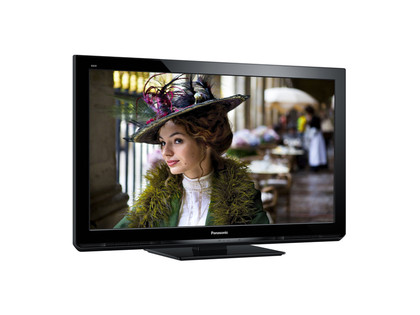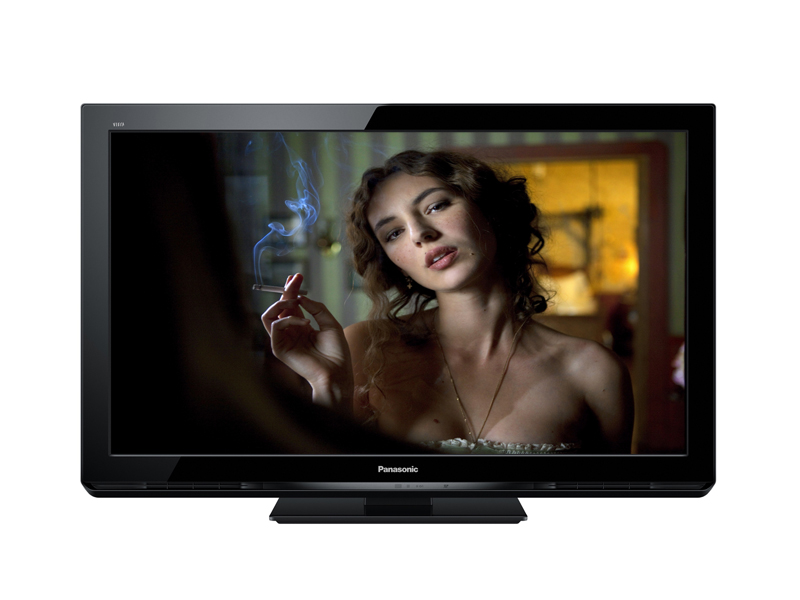Why you can trust TechRadar

The plasma-based P42S30 arrives hot on the heels of a series of LCD TVs, with the result that the first thing that stands out about its pictures is that they're not very bright compared with those of its LCD counterparts.
In fact, in a bright room set up they look positively dull using all but the Dynamic picture preset - and the dynamic one tends to exaggerate noise and throw up some strained colour tones, so it's not recommended that you use it.
You can, of course, attempt to inject more brightness and vibrancy into images via the provided picture adjustment tools. But actually, once you've got Panasonic's TV set up to its best advantage where contrast, colour tones and picture noise levels are concerned, its picture really does look pretty muted compared with your average calibrated LCD TV.
This could well be a significant problem for people who are looking for a TV to go into a bright environment, and it's also not likely to do the P42S30 any favours when it's sitting on a shop shelf alongside the latest ultra-bright LCD models. Yet it would be a mistake to assume from their lack of brightness and dynamism that the P42S30's pictures are in any way bad.
In fact, turn down the lights a bit and you'll find that the P42S30's pictures are in many ways excellent. Two things in particular stand out: the set's contrast and motion clarity.
Contrast
So far as contrast is concerned, while the set's white reproduction is a little muted and tinged with yellow, its black level response is outstanding, combining effortlessly deep black colours with the sort of shadow detail subtlety that you just don't tend to see with TVs that favour the rival LCD format.
This works wonders, in particular, when watching films, which tend to have more extreme contrast ranges - especially at the dark end of the spectrum - than typical TV fare.
When it comes to motion, there's practically no motion blur at all. Plasma screens don't suffer with the same response time problems that cause so many LCD TVs - especially budget ones - to suffer with resolution loss over (and sometimes smearing behind) moving objects.
Motion
This isn't to say that the P42S30's motion handling is perfect; there's noticeable judder when watching 50Hz material, and occasionally you can detect a little fizzing noise over skin tones if they're passing across the screen at speed. But overall it's just a real treat to be able to see for a change moving objects looking sharp and clear on a cheap TV.
Colours
The P42S30 impresses to some extent, too, with its colours. As noted before, its tones and saturations don't exactly explode off the screen at you. But provided you avoid the bizarrely dark Normal preset (the Cinema setting is a much better starting point), tones across the board - including skin tones - tend to look exceptionally natural. There's a slight drop off in tonal accuracy when you shift down from HD to standard definition, but it's not a major issue.
HD pictures look crisp and detailed too, despite the relative (versus LCD TVs) lack of brightness to emphasise the sharpness. Standard definition pictures look quite a bit softer, but in doing so they hide source noise quite well.
Detail
You can sharpen standard definition up using the Resolution booster tool Panasonic has introduced to many of its TVs this year. But if you try this feature, don't be tempted to use it on a high setting, for then it can start to make pictures look a bit fizzy and grainy.
Another issue with standard definition is that, as mentioned briefly earlier, colour accuracy slides the further down the quality scale your sources slide. So while colours look very good when you're watching HD and still good when you're watching a high-quality DVD, tones of red and green in particular can start to look a bit weird by the time you're watching the most heavily compressed standard def Freeview broadcasts.
Finishing up with more good news, though, one of plasma's key advantages over LCD remains the fact that you can watch it from almost any viewing angle without suffering the sort of contrast and colour loss you see with almost all LCD TVs. So the P42S30 is a potentially great option for large families where the last person to make it into the living room ends up having to watch from way off down the TV's sides.
John has been writing about home entertainment technology for more than two decades - an especially impressive feat considering he still claims to only be 35 years old (yeah, right). In that time he’s reviewed hundreds if not thousands of TVs, projectors and speakers, and spent frankly far too long sitting by himself in a dark room.

